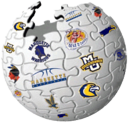(with a bonus McNeal is a stud edition)
Numbers for all five games of the post-season When we look at the final numbers for the post-season, there are several interesting things to note. Unfortunately, the numbers do not say that we actually won our final game. First, our effective Field Goal % defense was worse than our opponents. However, our Offensive Rebounding percentage (OR%) was significantly better. Returning to the formula that worked in the non-conference part of the season, Marquette did an excellent job on the boards. Finally, our opponents didn't turn the ball over as much, and actually had an advantage over MU in this area.
When we look at the final numbers for the post-season, there are several interesting things to note. Unfortunately, the numbers do not say that we actually won our final game. First, our effective Field Goal % defense was worse than our opponents. However, our Offensive Rebounding percentage (OR%) was significantly better. Returning to the formula that worked in the non-conference part of the season, Marquette did an excellent job on the boards. Finally, our opponents didn't turn the ball over as much, and actually had an advantage over MU in this area.
What happened to the turnovers? As we have covered in a previous post about turnovers and Marquette, a turnover rate above 20% for our opponents usually means we win. During the strong part of the last twelve games, Marquette was tremendous at forcing turnovers. However, this ability went away especially in the post-season. The graph above shows two trends. The first trend (line) shows our opponent's average turnover rate. Marquette's opponents were averaging a turnover rate well above 20%, which then slipped going into the post season.
As we have covered in a previous post about turnovers and Marquette, a turnover rate above 20% for our opponents usually means we win. During the strong part of the last twelve games, Marquette was tremendous at forcing turnovers. However, this ability went away especially in the post-season. The graph above shows two trends. The first trend (line) shows our opponent's average turnover rate. Marquette's opponents were averaging a turnover rate well above 20%, which then slipped going into the post season.
The second trend (bar) shows our ability to influence turnovers. As an example, an opponent that usually averages 20% turnover rate but had a 25% turnover rate against Marquette would mean that Marquette influenced the turnover rate by 5%. This trend mimics the previous trend, but clearly highlights that Kentucky and Stanford did a better than normal job protecting the ball against Marquette.
Cracked Sidewalks wonders if this is particular to Marquette, or if teams in general just value the ball better in the NCAA tournament. If the latter, the implication is that an aggressive defense based on generating steals may be susceptible come tourney time.
But At least Offensive Rebounding came back strong Offensive Rebounding for Marquette was an up and down affair during the season. There is no doubt, however, that it was one of the keys for our victories in the post-season. For Marquette to out-rebound Stanford shows just how well the team was doing in this area of play. After all, Stanford is one of the top rebounding teams in the country.
Offensive Rebounding for Marquette was an up and down affair during the season. There is no doubt, however, that it was one of the keys for our victories in the post-season. For Marquette to out-rebound Stanford shows just how well the team was doing in this area of play. After all, Stanford is one of the top rebounding teams in the country.
Individual Player Ratings - or McNeal is a Stud Look, it's no secret that McNeal was a stud over the end of the season, but when we look at the numbers it really stands out. In the post-season, Marquette had a total of 10 net points, meaning that the final margin of all five games was MU +10. Jerel had a positive net point contribution of THIRTY FRICKING POINTS. Pretty much everyone else was either neutral or negative. David Cubillan, in particular, had a very rough end to the season.
Look, it's no secret that McNeal was a stud over the end of the season, but when we look at the numbers it really stands out. In the post-season, Marquette had a total of 10 net points, meaning that the final margin of all five games was MU +10. Jerel had a positive net point contribution of THIRTY FRICKING POINTS. Pretty much everyone else was either neutral or negative. David Cubillan, in particular, had a very rough end to the season.
Taking his game to the next level... This graph shows exactly how McNeal took his game to the next level over the end of the season. James finished with the second most net points on the team, but McNeal just was incredible, with net positive contributions in every single game over the last twelve games. Well done, Jerel... well done.
This graph shows exactly how McNeal took his game to the next level over the end of the season. James finished with the second most net points on the team, but McNeal just was incredible, with net positive contributions in every single game over the last twelve games. Well done, Jerel... well done.
Thursday, March 27, 2008
Post-season Numbers - Where are my turnovers?
Written by
Rob Lowe
at
12:16 PM
![]()
Labels: Game Recaps, Jerel McNeal, NCAA tournament, pomeroy
Subscribe to:
Post Comments (Atom)

1 comment:
Henry do you have a man crush on McNeal?
Post a Comment